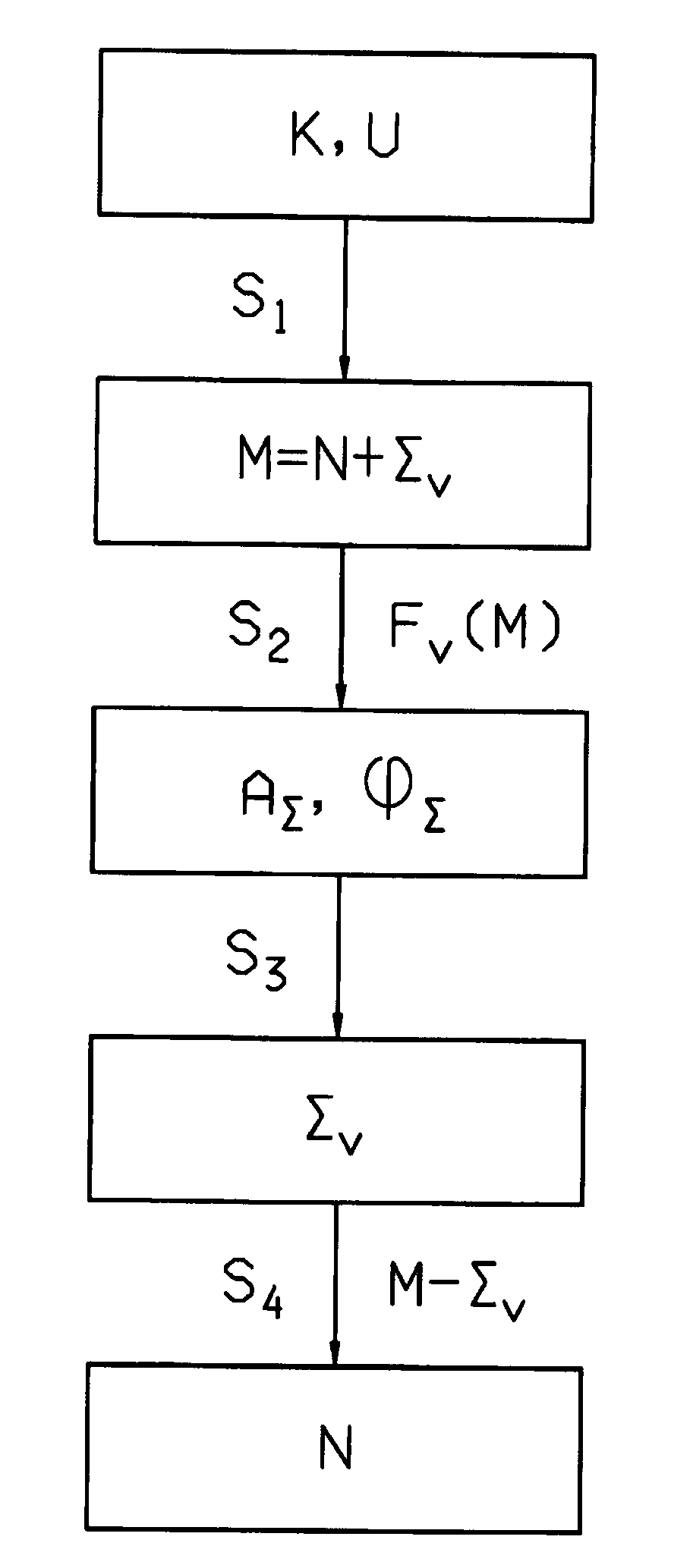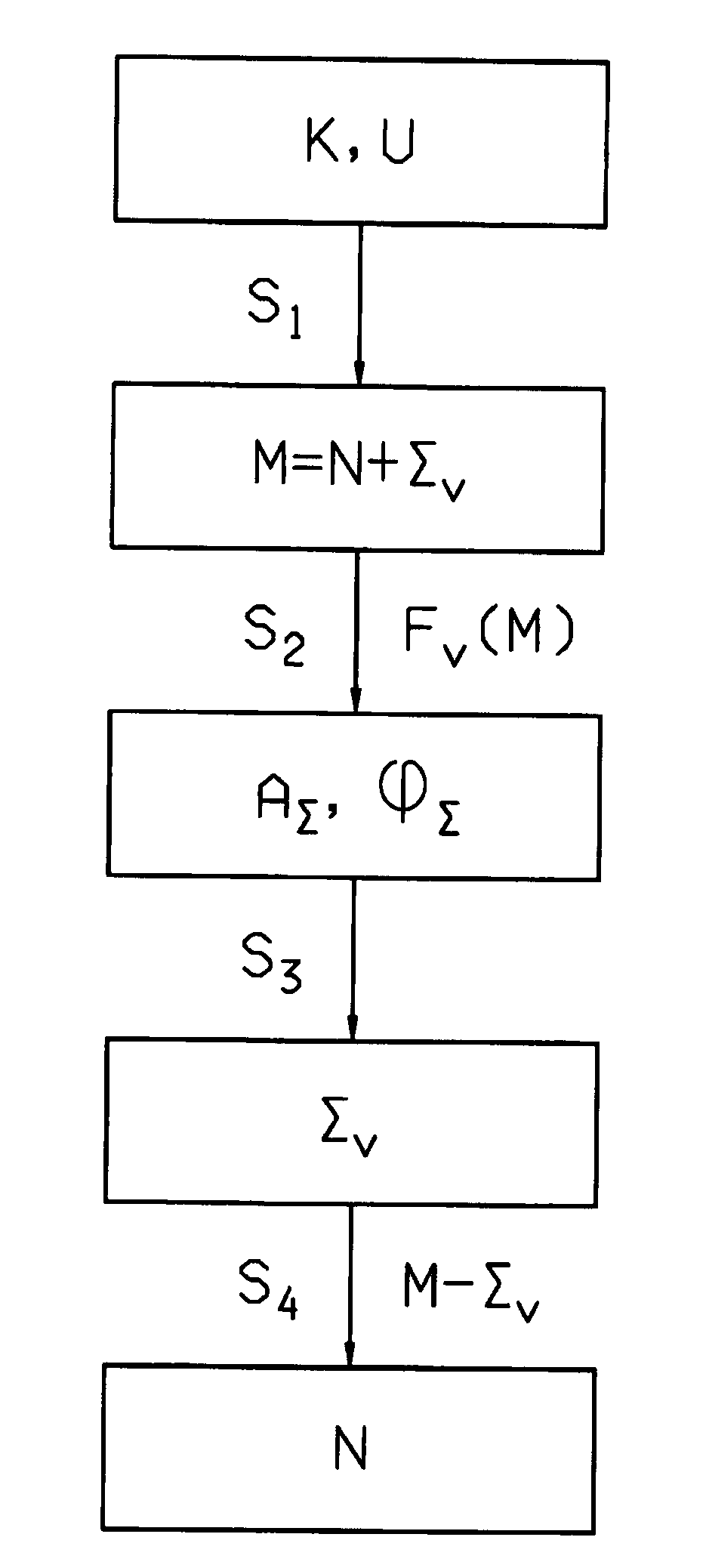Method of detecting a useful signal
a useful signal and signal detection technology, applied in the direction of amplitude demodulation, motor/generator/converter stopper, interference reduction, etc., can solve the problem of filter algorithm display, control or regulation of parameters based on analysis no longer being adequately possible, and complicating or distorting analysis of parameters. problem, to achieve the effect of reducing the computational complexity of detecting
- Summary
- Abstract
- Description
- Claims
- Application Information
AI Technical Summary
Benefits of technology
Problems solved by technology
Method used
Image
Examples
Embodiment Construction
[0023]As shown in FIG. 1, the starting point of the method of the invention is a parameter K specific to the operation of a motor vehicle component and a cause U of an interference with a known cycle. In motor vehicles, certain combinations of the parameter K and the cause U are especially typical. Examples of combinations of this type are the actuating position of the starting clutch of the motor vehicle as parameter K and a wobbling of the drive shaft of the motor vehicle drive motor as cause U of the interference, the actuating position of the starting clutch of the moor vehicle as parameter K and a judder vibration of the clutch as cause U of the interference, the mean initial rotational speech of the transmission of the motor vehicle as parameter K and a natural oscillation of the drive train as cause U of the interference, or the rotational speed of the wheels of the motor vehicle as parameter K and a natural vibration of the drive train as cause U. Other combinations commonly...
PUM
 Login to View More
Login to View More Abstract
Description
Claims
Application Information
 Login to View More
Login to View More - R&D
- Intellectual Property
- Life Sciences
- Materials
- Tech Scout
- Unparalleled Data Quality
- Higher Quality Content
- 60% Fewer Hallucinations
Browse by: Latest US Patents, China's latest patents, Technical Efficacy Thesaurus, Application Domain, Technology Topic, Popular Technical Reports.
© 2025 PatSnap. All rights reserved.Legal|Privacy policy|Modern Slavery Act Transparency Statement|Sitemap|About US| Contact US: help@patsnap.com


